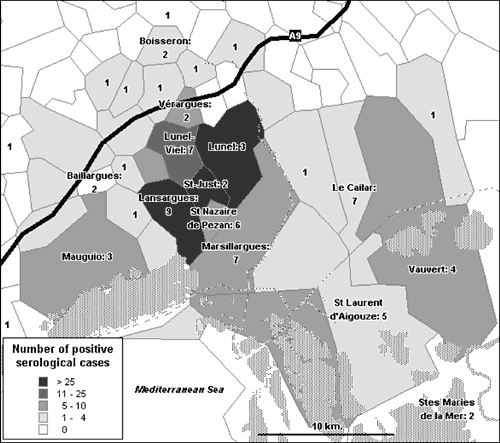Volume 7, Number 4—August 2001
THEME ISSUE
West Nile Virus
West Nile Virus
West Nile Outbreak in Horses in Southern France, 2000: The Return after 35 Years
Figure 5

Figure 5. . Geographic location of confirmed and probable clinical cases and serologically positive cases (according to serosurvey) of West Nile infection in equines, France. Data are grouped by commune, the boundaries of which are indicated. (The commune is the smallest French administrative subdivision, which approximately corresponds to an English parish). Numbers indicate clinical cases. Of the 76 cases, 73 are shown; the rest occurred more than 10 km outside the area. Names of communes in which more than one clinical case occurred are indicated. For each commune, the color (see key) indicates the number of positive serologic cases. The first cases were reported in Lansargues.
Page created: April 27, 2012
Page updated: April 27, 2012
Page reviewed: April 27, 2012
The conclusions, findings, and opinions expressed by authors contributing to this journal do not necessarily reflect the official position of the U.S. Department of Health and Human Services, the Public Health Service, the Centers for Disease Control and Prevention, or the authors' affiliated institutions. Use of trade names is for identification only and does not imply endorsement by any of the groups named above.